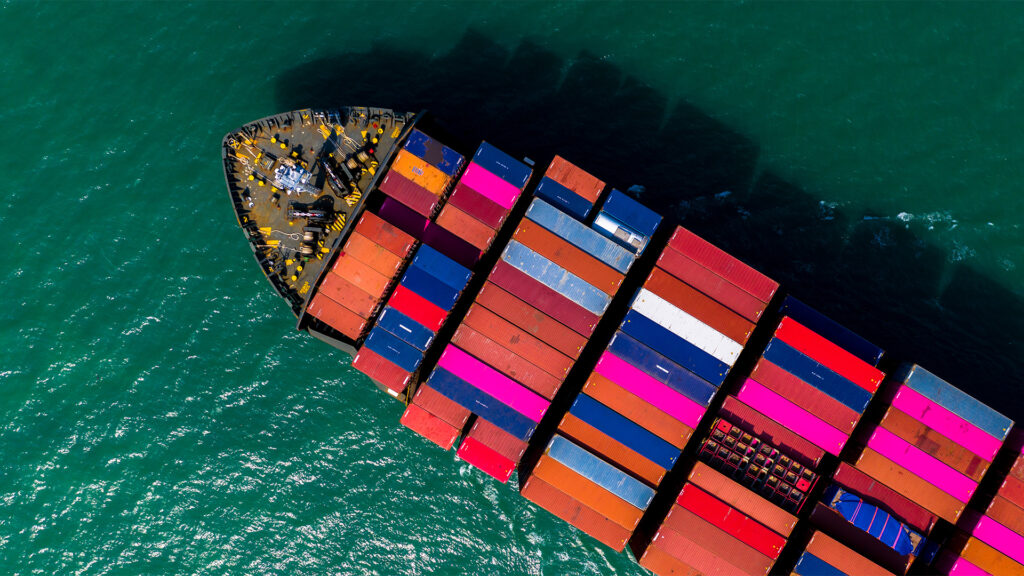
Business interruption insurance: the importance of understanding the cover
This article first appeared in the January 2011 issue of the In-House Lawyer, and is reproduced with their kind permission. www.inhouselawyer.co.uk
Business interruption insurance is often a key component of a company’s business continuity plan. The insurance is designed to compensate an insured for the financial impact of the interruption/interference to that business as a result of physical damage to insured property or other key external events, such as damage at a supplier’s or customer’s premises. The intention is to restore the business to the same financial position as if the loss had not occurred, subject always to the terms and conditions of the policy.
Over the last few years there have been a number of significant events that have given rise to large business interruption claims: the 2004 Tsunami, Hurricanes Katrina and Rita in 2005, the weather events in Queensland, Australia and South Africa in 2008, the Icelandic ash cloud in 2010 and the Chilean earthquake also in 2010. Claims are not only triggered by weather events but also man made events such as Deepwater Horizon. Other man made events include the breakdown of major pieces of machinery or the loss of computer systems to businesses heavily reliant on the machinery or computers systems to operate. In recent years, as businesses outsource more, the focus is on business interruption as a result of the inability of these suppliers to service customers as well as other interruption of critical services. Increasingly businesses have contingent business interruption cover often triggered by non physical damage events. The current focus of the insurance and reinsurance industry is the recent flooding in Queensland, Australia.
Catastrophes of the like identified above effect many industry sectors on a national and global scale. The industries that may be effected include:
- Mining: Queensland is Australia’s largest producing state, producing mostly coking or metallurgical coal used for steelmaking. It also produces some thermal coal which is used for power generation. Most if not all the mining companies have either fully or partially declared force majeure under their contracts with customers.
- Energy (oil and gas): coal seam gas drilling in Queensland’s Surat Basin has been halted due to flood. This industry sector was also badly affected by for example Hurricane Katrina and also Deepwater Horizon.
- Port/Rail Operators: rail lines in Queensland have been overcome by the floods. This disrupts the transport of commodities, such as coal supplies, for export.
- Utilities: the affect of the floods in Queensland on power generation, gas, telecoms and water supply will be substantial, given the property damage and effect on infrastructure.
- Leisure/travel: the effect of the floods in Queensland on the leisure and tourism industry is self evident. Similarly, the 2004 Tsunami affected high-profile tourist resorts in, for example Thailand.
- Agriculture: Australia’s wheat, sugar, fruit and cotton exports have been hit by varying degrees and fertilizer makers may also be affected.
- Manufacturers/retailers: not only do they face property damage, but also logistical issues of transporting goods to shops, customers and ports.
- Aviation: both airlines and airport operators.
In addition, natural catastrophes affect domestic buildings and state municipal property and operations.
Business Interruption insurance and reinsurance claims can therefore be particularly difficult to navigate through and this article focuses on the issues that often arise on business interruption claims.
Material damage/property damage
Business interruption claims are normally linked to material damage/property damage. One of the first issues is whether there is a valid occurrence which triggers the policy cover. The issues that may arise include:
- Whether the insurance is triggered, for example whether the weather event/flooding has triggered cover; or whether the damage occurred during the policy period.
- Was the property damaged excluded under the policy?
- Was the cause of the damage excluded under the policy?
- Are there multiple events or occurrences and if so how will the loss be allocated between them? The problem can be exacerbated where there are complex multilayer programmes where the interests of different layers might diverge.
Business interruption
Business interruption insurance claims are often the claims that can lead to the largest, most complex and contentious claims. This is due to the many factors that impact upon the calculation of loss. Policies often contain sub-limits, which can have an important impact on coverage. An examples of issues that arise include:
- Collecting and tracking information for the purposes of preparing or scrutinising a claim: if a business is affected by a flood, fire or explosion, the premises and offices where the necessary documentation is kept may be ruined/destroyed. This can make it difficult for an insured to support parts of their business interruption claim and raises issues with not only the insured proving their loss, but also at the insurance and reinsurance level because often in the absence of documentation certain assumptions are incorporated into the loss calculation which may be contentious. In terms of the larger corporations, often their financial data and manufacturing documentation is kept in more sophisticated electronic systems and often in different geographical locations, so this issue may not be such a problem.
- Basis of indemnification: the policy will set out the basis upon which the business interruption claim is to be calculated. Often this is limited to the ‘Loss of Gross Profit’, due to the reduction in turnover. However, there may be the option of presenting a claim on an output alternative or loss of production income basis. The basis on which the claim is presented can impact significantly upon the resources and skill sets required for the calculation of the loss, as well as the amount of the loss. Often the starting point of the calculation will be to look at the financial year immediately before the date of damage in order to assess standard turnover or output.
- Increased cost of working/additional increased cost of working claims: the policy may incorporate this cover. This is additional expenditure reasonably and necessarily incurred by the insured for the sole purpose of avoiding or diminishing the loss in turnover or output experienced as a consequence of the damage. Issues may arise as to whether the additional expenditure incurred was for the sole purpose of reducing the loss. There may be an extension to the policy which provides an indemnity for the costs incurred by the insured which are in excess of the limits provided under the policy of the increased cost of working. This is known as the additional increased cost of working. A key issue in respect of claims involving these elements is documentation of the decision making process and costs, often omitted in the haste to get back to business.
- Analysis of the causation of lost production/selling lost production: other factors may influence the rate of production will need to be taken into account and an insured will need to show what is claimed as lost production was due to the property damage or other business interruption trigger. Similarly, the ability to sell the lost production “but for” the damage can be a significant issue. There may be a number of reasons why the business may not have proceeded along the course it had done in the previous financial year. For example, when the general financial crisis hit in 2008, this may have had a detrimental impact upon customers’ and clients’ appetite or requirement for a particular service or product, which cannot be shown to be caused by the property damage. Indemnity period: the insurance will not provide an unlimited period of cover. Normally, the indemnity provided will be limited to a particular length of time, which is known as the “indemnity period”. The indemnity period is usually defined in the policy as the period beginning at the date of the occurrence of the damage and ending when the results on the business cease to be affected by the property damage. This is usually limited to a maximum indemnity period, commonly 24 months.
- Extensions to cover: in addition to the additional increase in the cost of working extension, further extensions that the insured may have negotiated or paid extra for include denial of access, where accessibility of the property due to the property damage impacts upon the business. A further extension which can also be a stand alone cover is contingent business interruption insurance.
- Other/Special Circumstances clause: this allows the parties to take into account other circumstances which may impact upon turnover/production and the calculation of the business interruption. Its aim is to ensure that the amount indemnified is as true as possible to the actual amount lost by the insured as a result of the damage. For example, if the company affected is a commodity producer, for example wheat or coal, where the damage is so extensive and affects a number of companies in the same industry sector it can create a price spike for that particular commodity globally as a result of the disruption in production and supply. An insured may have benefited from the increased commodity prices in another geographical locations or once its business has got back on track. Issues as to whether this should be taken into account or not and how this is included in the loss calculation can create significant discussions and debate at the insured, insurance and reinsurance levels.
- Deductibles/occurrences: the number of deductibles applicable to a loss can be a cause of contention. This is particularly the case where there are potentially multiple causes of the property damage and business interruption Taking the example of flood, wind or storm, the policy would normally define whether flood, wind or storm constitutes one occurrence, and therefore one deductible is payable by the insured, by reference to a temporal limit, for example 72 hours. Multiple occurrences would impact upon the number of deductibles and affect the amount paid by the insured, insurer or reinsurer. On the particularly large losses, where there are excess layers on both insurance and reinsurance levels, this can create significant issues due to the varying interests involved.
Contingent liability
This is a business interruption insurance where the insurance is triggered by property damage at the premises of a supplier or customer or other trigger such as loss of utility, denial of access or the act of a local authority/Government/Regulating Authority. There are certain industry sectors, such as agriculture and mining, that are heavily reliant on utilities providers (water, gas and electricity) and, in the case of the agricultural sector, upon external contractors to provide large machinery often needed such as at harvest time. Port operators are likewise reliant upon manufacturers, commodity producers, logistics and rail companies for the continuous flow of products to the ports for shipment. For example, there were significant problems with gas supplies in Western Australian following the Varanus Island explosion in 2008 and uncertainties over the continuity of supply in South Africa due to the weather events in 2008. While policies vary, there is often extended cover for named suppliers and loss of utility supply. With the deregulation of utility supplies, the identity of the contractual supplier can often differ from the source of supply, raising issues of whether or not the policy responds to business interruption as a result of damage at source.
Any business which is heavily dependent upon other industries for its business should consider contingent business interruption insurance cover and must include appropriate triggers in the policy. For example, many airport operators and airlines discovered that although heavily reliant on the provision of airspace to generate revenue, when this was lost in 2001 (after the 9/11 attacks) and in 2010 (Icelandic ash cloud), the contingent business interruption trigger language in their policies was not broad enough to respond.
Reinsurance and retrocession
Inevitably payment at the reinsurance level is key to drive the payment of the insurance claims. As a result, it is important to identify issues facing reinsurers. Reinsurers will often be concerned that the claims at the insurance level are being handled effectively and efficiently. They may, in this respect, insist on control of the insurance claim (where there is a claims control clause in the reinsurance policy) or otherwise seek to participate in the investigation, adjustment and settlement of loss(es). Other issues might include:
- Triggers, aggregation and excess/attachment points.
- Where there is a captive or fronting agreement, whether the insurance or reinsurance should be back to back and the extent to which the captive/front should pay in claim investigation and negotiation.
- Reinstatement.
- Payment on account and how these should be managed, particularly where there is a reinsurance programme with multiple layers and potentially non-aligned interests.
Business interruption insurance claims can involve considerable numbers of parties in addition to the principals such as loss adjusters, experts, accountants and lawyers, as well as documentation. What is important is that the claims process is correctly project managed and that there is no polarisation of the respective parties’ positions. To successfully resolve an insurance claim without recourse to expensive dispute resolution requires a degree of cooperation by the insured, insurers and reinsurers throughout the process. That is not to say there are no disagreements and difference in approaches as to how a policy should respond to a claim. In claims with multiple and extensive issues, the parties should look to agree those issues that can be agreed at an early stage, thereby allowing them to focus energy, time and resources to resolve the remaining contentious issues.








